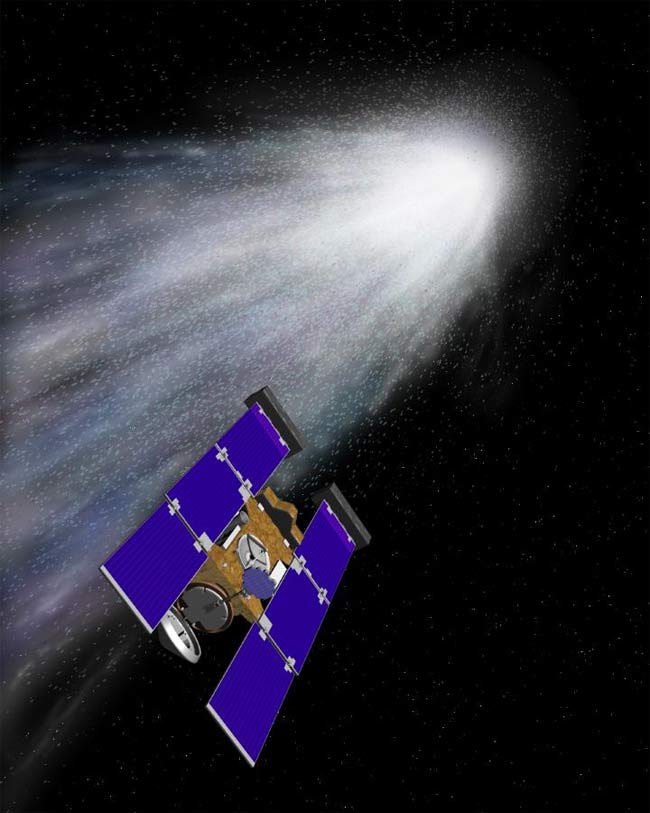Life's Building Block Found in Comet

Afundamental ingredient for life has been discovered in a comet sample,supporting the idea that such icy objects seeded early Earth with the stuffneeded to whip up living organisms.
Newresearch firms up past suggestions of glycine, the simplest amino acid used tomake proteins, inside samples from the cometWild 2 (pronounced "Vilt 2").
"Thisis the first time an amino acid has been found in a comet," said leadresearcher Jamie Elsila of NASA's Goddard Space Flight Center in Greenbelt, Md. "Our discovery supports the theory that some of life's ingredientsformed in space and were delivered to Earth long ago by meteorite and cometimpacts."
How lifearose on Earth has long puzzled scientists and philosophers alike, withpossible evidence for such building blocks showing up floatingabout in the cosmos and even inside the mouthsof volcanoes.
The newfinding, which has been accepted for publication in the journal Meteoritics andPlanetary Science, also has implications for finding alien life.?
"Thediscovery of glycine in a comet supports the idea that the fundamental buildingblocks of life are prevalent in space, and strengthens the argument that lifein the universe may be common rather than rare," said Carl Pilcher, directorof the NASA Astrobiology Institute, which co-funded the research.
NASA's Stardustspacecraft captured samples of gas and dust from Wild 2 in 2004. The materialparachuted to Earth in 2006. Since then, scientists around the world have beenanalyzing the samples to learn the secrets of comet formation and our solarsystem's history.
Breaking space news, the latest updates on rocket launches, skywatching events and more!
Preliminarytesting had suggested glycine was present in the samples. But since glycine isused by terrestrial life, the team couldn't rule out contamination from Earthlysources, according to a NASA statement released today.
"Itwas possible that the glycine we found originated from handling or manufactureof the Stardust spacecraft itself," Elsila said. ?
To teaseapart contamination from the real McCoy, the researchers recently analyzed thesamples for different carbon isotopes, which are versions of the same elementwith different masses.
Glycinemolecules from space tend to have more of the heavier Carbon 13 atoms thanglycine from Earth. That's exactly what the team found.
"Wediscovered that the Stardust-returned glycine has an extraterrestrial carbonisotope signature, indicating that it originated on the comet," Elsilasaid.

Space.com is the premier source of space exploration, innovation and astronomy news, chronicling (and celebrating) humanity's ongoing expansion across the final frontier. Originally founded in 1999, Space.com is, and always has been, the passion of writers and editors who are space fans and also trained journalists. Our current news team consists of Editor-in-Chief Tariq Malik; Editor Hanneke Weitering, Senior Space Writer Mike Wall; Senior Writer Meghan Bartels; Senior Writer Chelsea Gohd, Senior Writer Tereza Pultarova and Staff Writer Alexander Cox, focusing on e-commerce. Senior Producer Steve Spaleta oversees our space videos, with Diana Whitcroft as our Social Media Editor.
